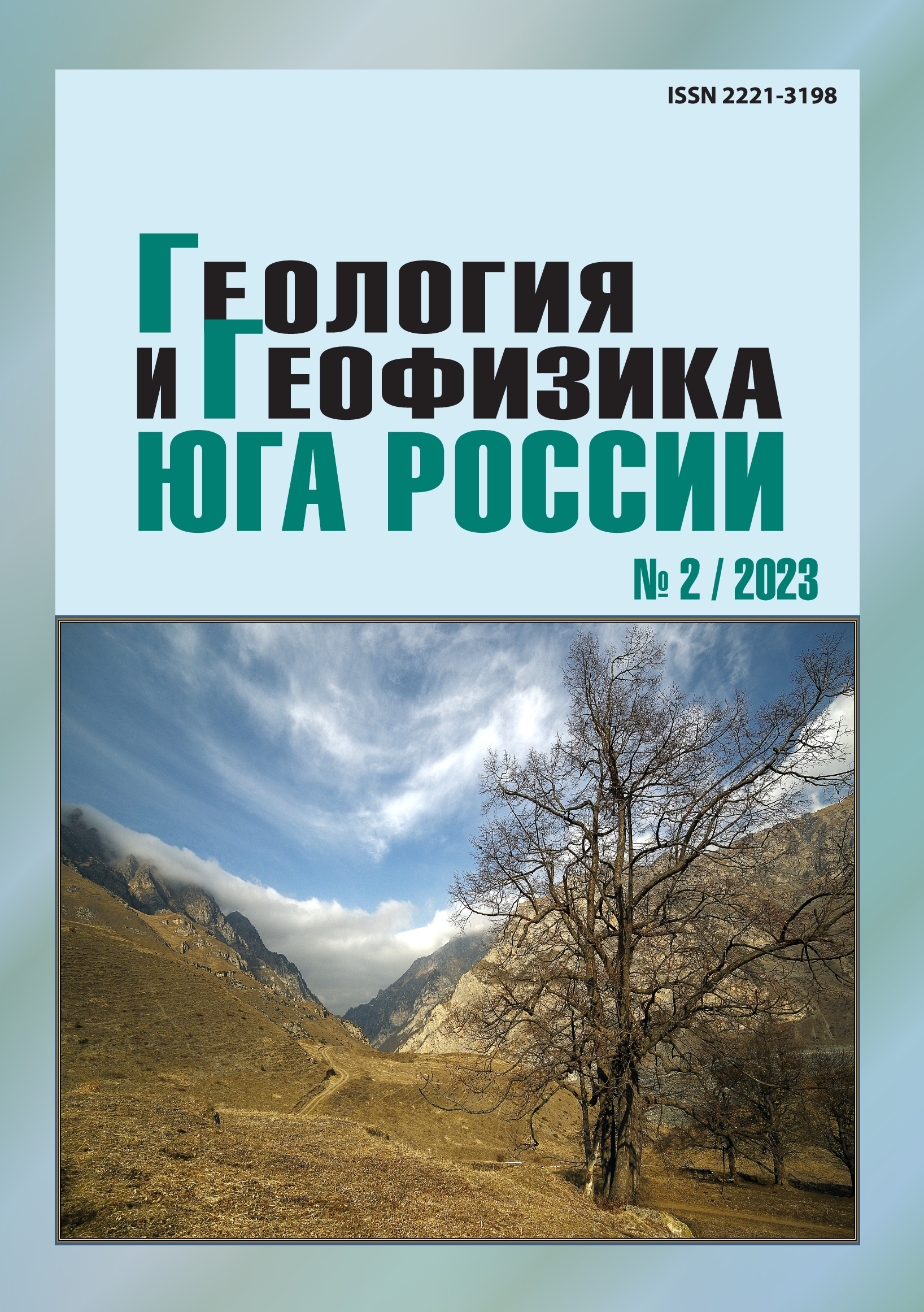On the place of rocks of the Tokhanian series in thestructural zone of the Peredovoi Ridge of the North Caucasus
Abstract
Relevance. After the discovery of tectonic covers in the Caucasus in the early 1970s, it became clear that the sequence of Lower (?) and Middle Paleozoic rocks of the ancient core of the Greater Caucasus is tectonic-stratigraphic and forms an accretionary column. It was believed that in its modern form it was formed during the main phase of the Hercynian orogeny and is represented by several systems of tectonic sheets. In the works of Caucasian geologists of the 1970s and 1980s (Baranov, Grekov, and others), the following vertical sequence of rock complexes was described in the Peredovoi Ridge (ZPR) zone (from top to bottom):1) Integument system of sialicallochthon; 2) Top cover system; 3) System of medium covers; 4) The system of the lower covers. At the base of this column were placed crystalline formations of the Blybsky complex, which were considered presumably autochthonous. Later V.L. Omelchenko, it was shown that the latter can be considered as a large fragment of the uppermost, sialic, allochthon. In the process of post-Hercynian tectonic events, it was torn off from the Atsgaranappe and pushed under the system of middle nappes together with the structurally lower formations of the ophiolite complex from the Marukhnappe. Aim. To summarize and analyze the stock and published data on the tectonic-stratigraphic structure of the ZPH and determine the position of the rocks of the Tokhan series in it. Methods. Comprehensive analysis of previously conducted field work and published data on the structure of the ZPH. Results. In our opinion, the phyllite-like shales of the Tokhannappe, which occupy the lower position in the modern accretionary column, earlier, immediately after the Hercynian processes, could have been located either much higher, belonging to the system of the upper covers or, rather, laterally-remotely, at a considerable distance from the known Hercynian columns of covers, as suggested by E.V. Khain. Later, as a result of the Indosiniantectogenesis (T3-J11), they, like the rocks of the Blybsky complex, were pushed under the Devonian volcanic rocks. The underthrusting of shales sometimes even occurred together with sealing Late Hercynian molasses (the Chuchkur river basin), and in other places (the Urup and B. Laba rivers) together with numerous bodies of Upper Paleozoic injective magmatites that did not penetrate into the overburden. At the same time, there was an additional combing described by Yu.V. Karnaukh – in the newly formed tectonic plates, phyllite-like shales of the Tokhan cover (below) and volcanic rocks of the Kizilkol (in the west – Labino-Zaraussky) cover (top) are combined. All this points to the important role of post-Hercynian (Indo-Sinian) displacements, expressed in bilateral underthrusts, significantly complicating the cover structure of the ZPH.


